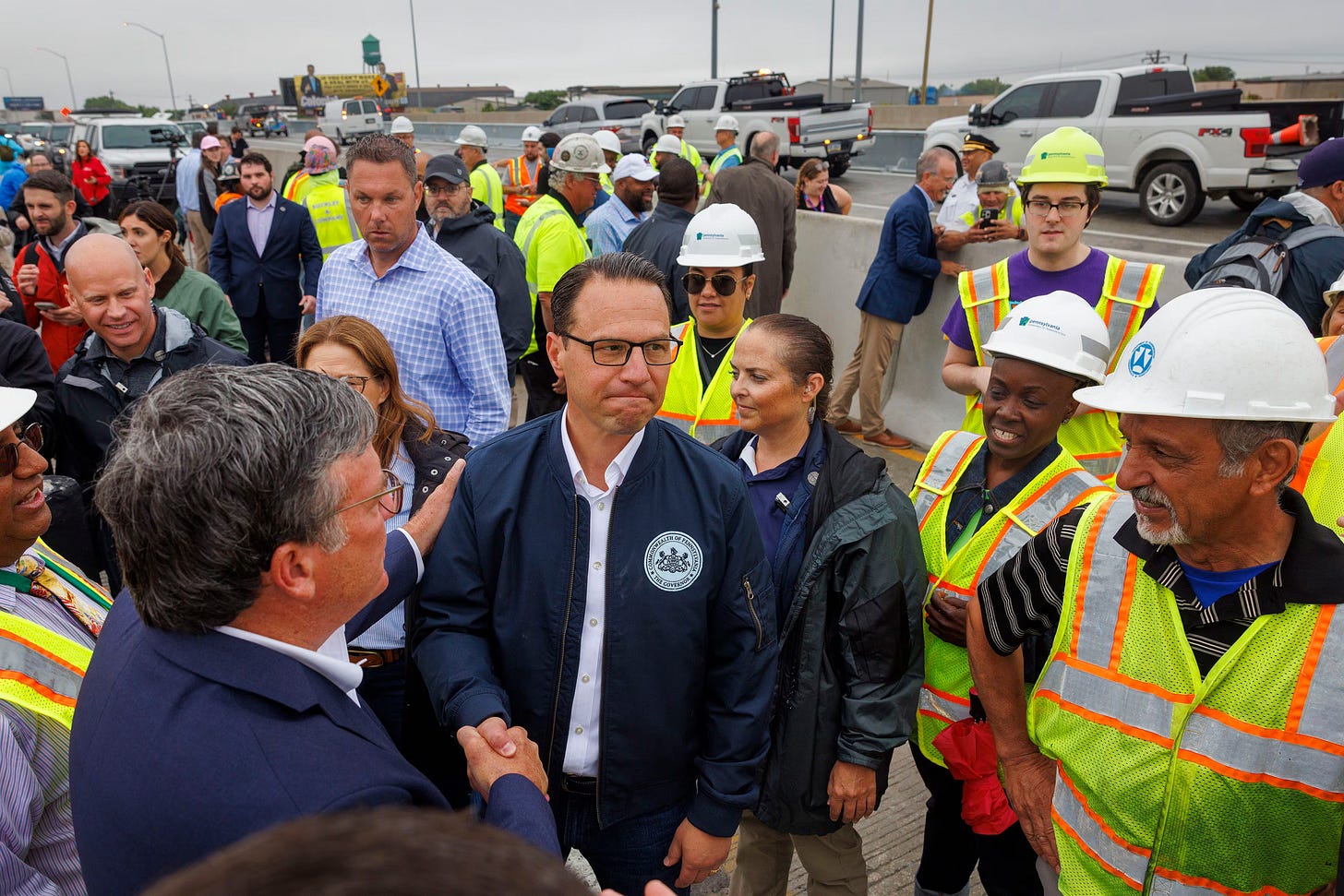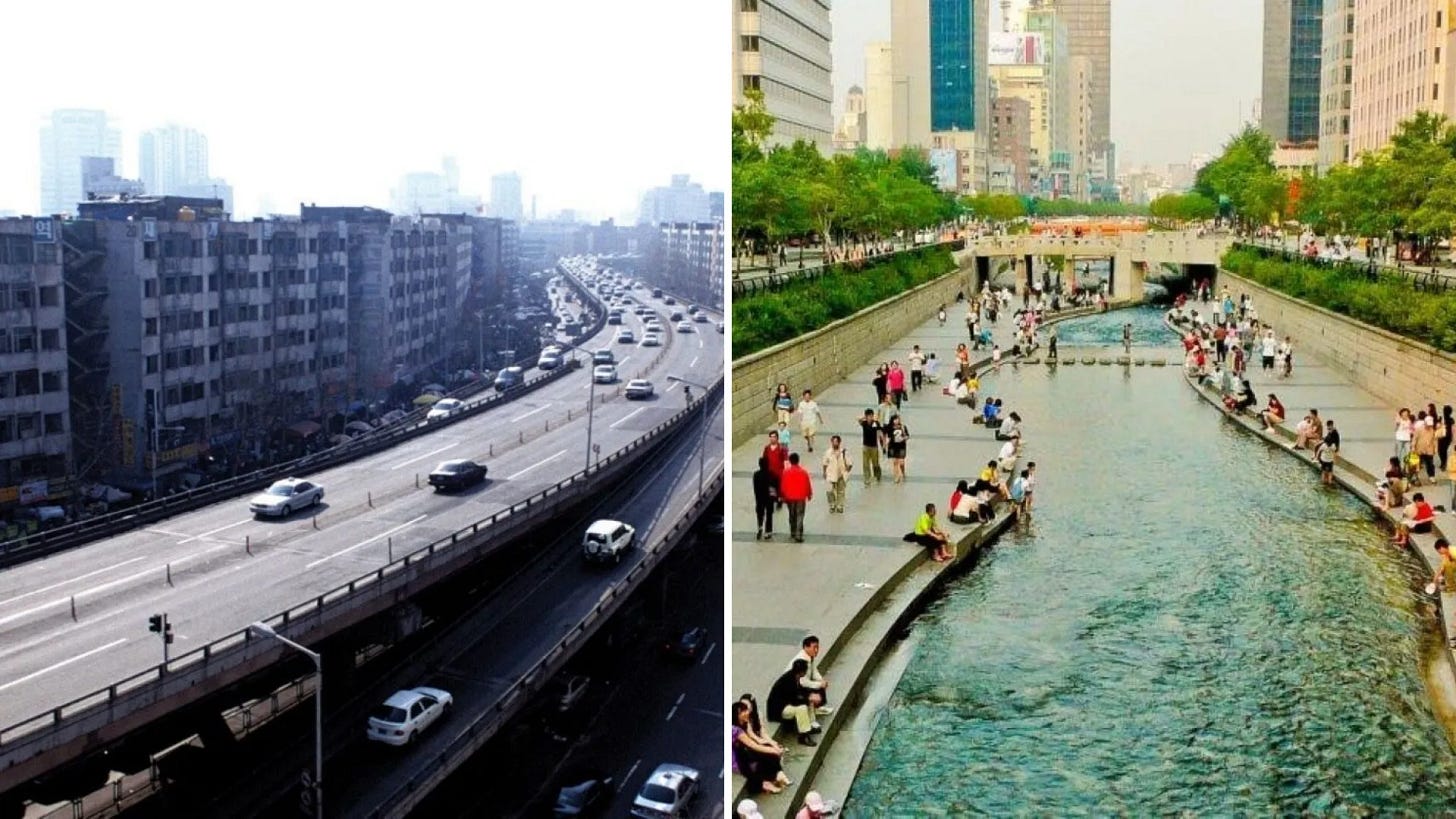America was essentially built on the idea of giving up on what’s not working. Many Americans come from families who immigrated here because they were fed up with life in another country.
This ceaseless pursuit of the better life is part of what makes America so dynamic. The land of opportunity and creative destruction. But it also means we have never cultivated a knack, an ethos, a culture of repair.
In other countries, people return refillable bottles for a discount. Here, we throw out an estimated 60 million plastic bottles every day.
But we don’t just dispose of objects, we dispose of places and their governments too. Just look at the top 10 American cities in 1950.
Eight out of ten of them had more people in 1950 than today, despite the overall U.S. population more than doubling since then. Projects like California Forever found advocates because so many people believe we should build on virgin land rather than reform places like San Francisco.
Our distrust that existing places, institutions, and governments can be improved reached a fever pitch during last year’s election season. We’ve spent the past few decades fascinated with the idea of disruption. Mark Zuckerberg’s famous phrase “move fast and break things” summarizes the sentiment that collateral damage is a badge of honor. Over time, we’ve been conditioned to believe the only possible way forward is to disrupt things rather than repair them.
This doesn’t mean institutions don’t need change. Government, higher education, healthcare, technology — all of them need major change. But how we do that, and maybe even more importantly, how we talk about doing it, matters. Many of the metaphors that have been used — an ax, or sledgehammer — are violent. We don’t even have the vocabulary to discuss how to repair our government and our society writ large without imagining destruction as part of the process.
Repair as a metaphor
The seeds of this piece came to me back in November when I read about how Rep. Marie Gluesenkamp Perez was one of the few Democrats to win a red county in the 2024 election. Like so many of us, I was wondering how Democrats would find a message that works for a broad swath of the country.
Perez, who is in her thirties and has a young kid, owns an auto body shop. One of her signature legislative efforts was an agricultural “right to repair” bill, which requires farm equipment manufacturers to provide tools, parts, and instructions so that consumers can repair their own equipment. If you buy a John Deere tractor, for example, and something needs to be repaired, you need to use John Deere parts and a John Deere authorized mechanic to fix it. This monopoly, aside from being unfair, makes repair work more expensive and slow.
But this problem of companies’ monopolizing repairs is not only limited to farm equipment. And so Perez introduced another bill aimed at electronics repairs. At the end of 2024, Elizabeth Warren joined in and introduced legislation for a right to repair military equipment, as Lockheed Martin and Boeing and other military contractors require the U.S. military “to use expensive original equipment and installers to service broken parts versus having trained military maintainers 3D print spares in the field and install them faster and cheaper,” according to Reuters.
This focus on repair got me thinking: so many of us feel disempowered to repair not just our stuff, but our society. While there’s no explicit monopoly by companies preventing us from repairing our communities, it can often feel like there are other gatekeepers — local political machines or power players, NIMBYs, government regulations, etc. — who make it seem impossible to find an entry point to fix the system. The gross lionization of Luigi Mangione is, I think, an indication of how many people believe it takes violence to effect change in this country. If we have not lost our right to repair our society, then at least we have lost our wherewithal to do so.
The crossover appeal of repair
Josh Shapiro rose to national prominence when he oversaw the repair of I-95 just 12 days after it collapsed. It’s an example of deliverism, but it’s also a case study in repair.
And I dare say there was something masculine in Shapiro’s ability to not just get something theoretical done, but physical, that appealed to both men and women.
If we thought that the 2024 election was going to be a referendum on women — abortion, a female president — it turned out that the real story was about men. The young “manosphere” and the older men who found Trump’s brand of masculinity appealing.
As Aaron Renn wrote in City Journal:
“Fight! Fight!” Donald Trump shouted to his followers. He stood up straight, blood on his cheek, pumping his fist in the air, rising after having been bundled to the ground by Secret Service agents when shots rang out at his rally in Butler, Pennsylvania. Such displays of bravura can’t be faked. Trump’s courage under actual fire helps to explain his appeal to men, especially young men.
Renn goes on to explain that despite Trump’s many, many problems, he embodies an “archetype of masculinity” that has appeal.
Could it be that another archetype of masculinity is the man who repairs things — the guy who fixes things around the house, who gets under the hood of the car, who is helpful and hands on?
Famously, the former mayor of Boston, Thomas Menino, was nicknamed the Urban Mechanic, and later helped to establish an office of “new urban mechanics” in Boston’s City Hall. From a WBUR obit:
Here Menino emerged as the Urban Mechanic, Mr. Nuts and Bolts. He kept track of snow plows, street cleaning and potholes. Boston historian Jim Vrabel says Menino had seen how effective Flynn had been as an action-figure mayor — going out into the neighborhoods, riding fire engines and snow plows, famously rescuing a Salvation Army Santa Claus from a burning car, and trying to heal the city's race wounds.
It reminds me of something else Renn wrote:
Healthy masculinity is agentic, aggressive, competitive, courageous, and generous, productive, moral, and dignified. Men need not consider these values to be in conflict.
The description of the mayors above sound a lot like that vision of masculinity.
Cities have shown how repair works
This can all sound really nice, but maybe too sweet as we’re on the brink of Trump’s second administration. People are breaking out the popcorn to see how the DOGE tries to slash $2 trillion in government spending.
Jennifer Pahlka has written:
We can wish that the government efficiency agenda were in the hands of someone else, but let’s not pretend that change was going to come from Democrats if they’d only had another term, and let’s not delude ourselves that change was ever going to happen politely, neatly, carefully.
Am I really telling Democrats to respond to this bloodsport with a politics of repair?
Maybe.
After the government has been slashed, what will people have to show for it? How will this government reform show up in their daily lives? I don’t think it will. I think it will be as meaningless to people as the CHIPS Act or the IRA.
People need to see tangible changes in their lives to admire politicians.
The bread and butter of urbanism is repairing the mistakes of the past 75 years of bad urban planning. These feats of change, like the daylighting of a river in Seoul pictured above, are not easy but they are miraculous, humanizing, forward-looking and positive. They offer something other than the narrative of destruction or the backward-facing-ness of the new luddite culture.
But maybe their most important achievement is that they build our confidence to repair the mistakes of the past. Even small moves — like getting rid of the vacancy on a main street, or adding a pedestrian plaza near outdoor dining — build that muscle to make change.










Love this one Diana, and I also find myself wondering if we could extend the idea of repair further. I love what's called "visible mending" when textiles or other objects are repaired in a way that doesn't hide the repair. Maybe there are example of this in cities too--where we use what's already there, adaptive reuse, etc.? The Highline, for example, feels akin to visible mending.
I think the biggest point here is that attempts at repair are always met with resistance, and our country has completely forgotten how to disagree productively.
This means that simple conversations about things like building new housing in increasingly expensive cities devolves into accusations about gentrifiers and greedy property developers (from the left) and fear mongering about "those people" and changes to neighborhood characters (from the right).
Both angles of conversations (from people resisting change) trend towards violent and exclusionary. "If you disagree with me you're a monster".
So it doesn't surprise me that people advocating for change end up feeling backed into a corner where violence is the only way out.
I think the case of Califonia Forever is illustrative of this. I see Califonia Forever as people who tried to repair SF being forced out of the city and demoralized to the point of giving up and trying elsewhere by the stiff resistance given by the power structures in SF.
But, I think you're right overall that the people at large want to see repair. The case of NYC congestion pricing and Phillip Eng fixing the MBTA show just how much public support can be brought to bear for repair.
But, this can also go the other way. The Big Dig left Boston deeply cynical about infrastructure projects after it was portrayed as a boondoggle by the media (similar to what's happening with CHSR).